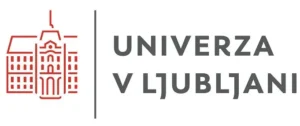News
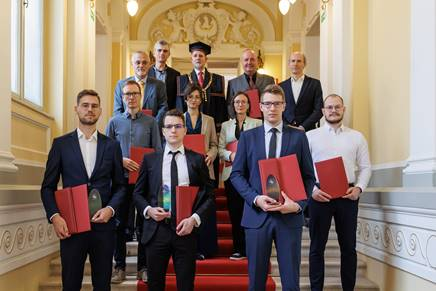
Assist. Prof. Matjaž Humar, PhD received the Uroš Seljak, PhD award for his mentorship
On October 4, 2023, the Uroš Seljak, PhD awards and accolades for best scientific articles by students were granted for the second time at the University of Ljubljana. The awards were presented by the Rector of the University of Ljubljana Prof. Gregor Majdič, PhD, the donor Prof. Uroš Seljak, PhD, and the American-Slovenian Educational Foundation (ASEF). The awards and accolades from Prof. Uroš Seljak, PhD, of which three were presented this year, are intended to promote and support the scientific publications of students in first and second-degree study programs and to encourage mentorship of students in the Republic of Slovenia. Among the recipients of the award was Miha Papič for his published scientific work titled “Topological liquid crystal superstructures as structured light lasers.” He conducted his research at the Jožef Stefan Institute at the Department of Condensed Matter Physics F-5. His mentor, Assist. Prof. Matjaž Humar, PhD the head of the Laboratory for bio-integrated photonics and soft photonics, also received a plaque for his mentorship.
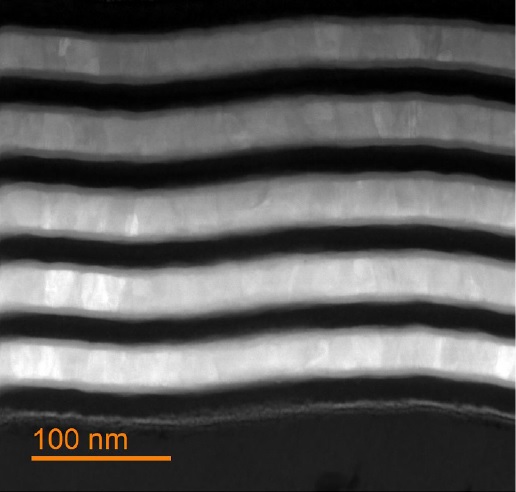
Article in Ceramics International
Matej Pregelj from the Department of Condensed Matter Physics F-5, in collaboration with colleagues from the Department of Thin Films and Surfaces and other researchers from Slovenia and Serbia, published the article Perpendicular magnetic anisotropy at room-temperature in sputtered a-Si/Ni/a-Si layered structure with thick Ni (nickel) layers. In the article, they presented a detailed study of nanometer Si/Ni/Si layers, where perpendicular magnetic anisotropy was observed. It is one of the first observations of this property in Si/Ni/Si layers and thus opens up possibilities for the use of such layers in memory units, sensors, logic chips, etc.

Article in Journal of Physics: Energy
Dr. Dejvid Črešnar, Nikita Derets, Dr. Andraž Rešetič, Dr. Marta Lavrič, Prof. Dr. Boštjan Zalar, prof. Dr. Samo Kralj, Prof. Dr. Zdravko Kutnjak, Assist. Prof. Dr. Brigita Rožič from the Department of Condensed Matter Physics F5, former colleague of the Department of Condensed Matter Physics F-5 Dr. Maja Trček, and colleagues Assist. Prof. Dr. Gregor Skačej, Faculty of Mathematics and Physics, University of Ljubljana, and Prof. Dr. Valentina Domenici, Department of Chemistry and Industrial Chemistry, University of Pisa, Italy, have, on the invitation (to Rožič) of Editors Prof. Dr. N. Mathur and Prof. Dr. X. Moya from the University of Cambridge, published an article entitled Caloric effects in liquid crystal-based soft materialsin a special issue of the Journal of Physics: Energy (IF=7.5) dedicated to caloric materials. In the mentioned article, the authors presented their latest research results of very large caloric responses observed in soft materials such as liquid crystals (TK) and liquid crystal elastomers (TKE). Through direct measurements, they showed that the size of the electrocaloric phenomenon in TK could exceed 8.3 K at a relatively small change in the electric field of 30 kV/cm and the existence of a record high elastocaloric responsivity of 24.2K/MPa in TKE.
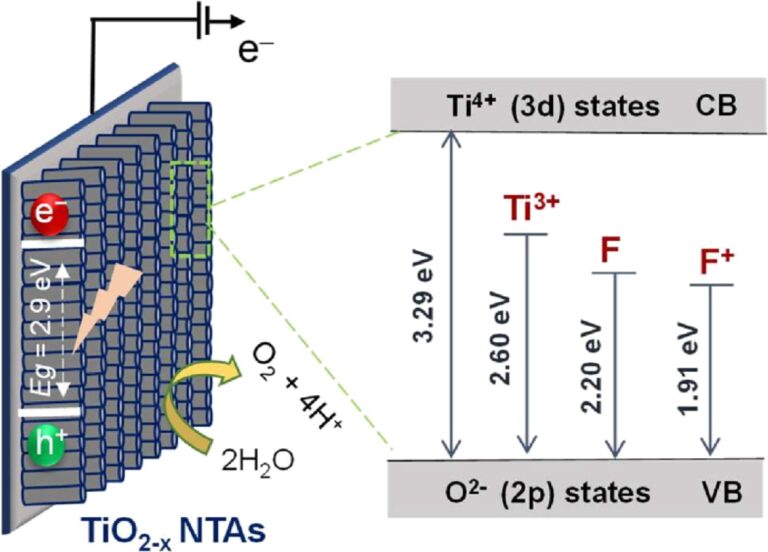
Article in ACS Omega
Denis Arčon and Matej Pregelj from the Department of Condensed Matter Physics F5, in collaboration with colleagues from the University of Nova Gorica and researchers from Bulgaria, published the article The Role of Lattice Defects on the Optical Properties of TiO2 Nanotube Arrays for Synergistic Water Splitting. The article reports a one-step chemical method that enables the reduction of an array of titanium dioxide nanotubes with point defects. In-depth chemical analysis is supported by electron paramagnetic resonance measurements, which confirm the presence of oxygen vacancies. The prepared samples show an enhanced photocurrent for water splitting due to pronounced light absorption in the visible region, enhanced electrical conductivity, and improved charge transportation.
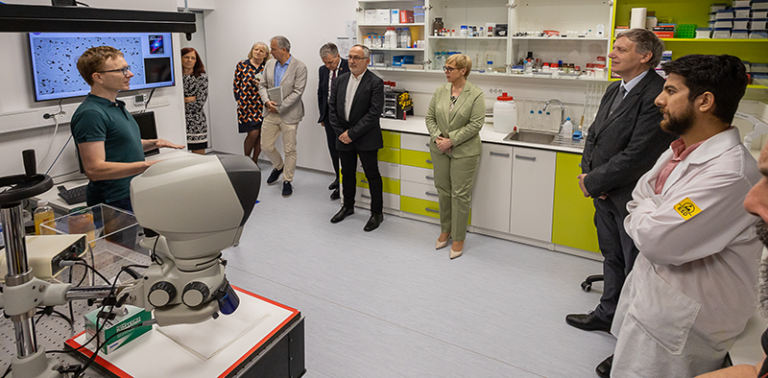
The president of Slovenia, Nataša Pirc Musar, visited the Bio-Integrated Photonics Lab
On June 2, 2023, the President of Slovenia, Nataša Pirc Musar, visited the Bio-Integrated Photonics Lab at the Jožef Stefan Institute. Matjaž Humar and Abdur Rehman Anwar presented her with some recent results under the project FoodTraNet. They conducted a live demonstration of the photonic barcodes. There was also a short debate about the importance of novel methods for tracking quality and authenticity of various foods.
